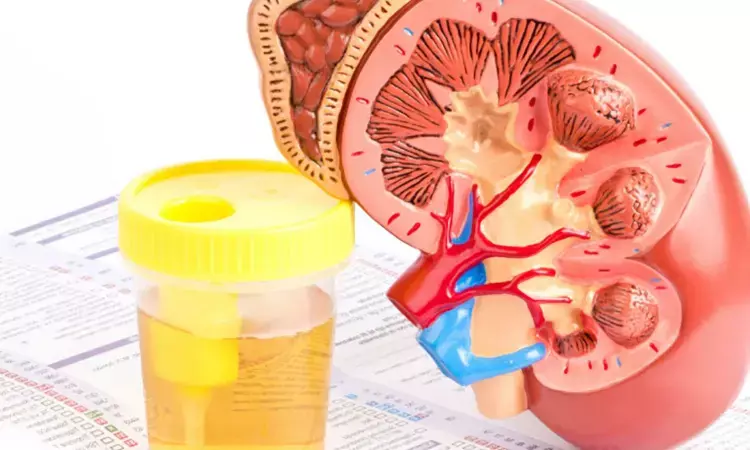- Home
- Medical news & Guidelines
- Anesthesiology
- Cardiology and CTVS
- Critical Care
- Dentistry
- Dermatology
- Diabetes and Endocrinology
- ENT
- Gastroenterology
- Medicine
- Nephrology
- Neurology
- Obstretics-Gynaecology
- Oncology
- Ophthalmology
- Orthopaedics
- Pediatrics-Neonatology
- Psychiatry
- Pulmonology
- Radiology
- Surgery
- Urology
- Laboratory Medicine
- Diet
- Nursing
- Paramedical
- Physiotherapy
- Health news
- Fact Check
- Bone Health Fact Check
- Brain Health Fact Check
- Cancer Related Fact Check
- Child Care Fact Check
- Dental and oral health fact check
- Diabetes and metabolic health fact check
- Diet and Nutrition Fact Check
- Eye and ENT Care Fact Check
- Fitness fact check
- Gut health fact check
- Heart health fact check
- Kidney health fact check
- Medical education fact check
- Men's health fact check
- Respiratory fact check
- Skin and hair care fact check
- Vaccine and Immunization fact check
- Women's health fact check
- AYUSH
- State News
- Andaman and Nicobar Islands
- Andhra Pradesh
- Arunachal Pradesh
- Assam
- Bihar
- Chandigarh
- Chattisgarh
- Dadra and Nagar Haveli
- Daman and Diu
- Delhi
- Goa
- Gujarat
- Haryana
- Himachal Pradesh
- Jammu & Kashmir
- Jharkhand
- Karnataka
- Kerala
- Ladakh
- Lakshadweep
- Madhya Pradesh
- Maharashtra
- Manipur
- Meghalaya
- Mizoram
- Nagaland
- Odisha
- Puducherry
- Punjab
- Rajasthan
- Sikkim
- Tamil Nadu
- Telangana
- Tripura
- Uttar Pradesh
- Uttrakhand
- West Bengal
- Medical Education
- Industry
Leukocyturia and Hb early indicators of kidney injury among heat-stressed male workers

U.S.A: According to a study published in BMJ Open, leukocyturia and Hb, which can both be measured using point-of-care methods, may be early signs of kidney damage and a risk for eGFR reduction in heat-stressed male workers.
In order to better understand the causes of chronic kidney disease of non-traditional origin (CKDnt), Dr. Erik Hansson remarked that "this can enable individual-level prevention and research."
Over the past few decades, a chronic kidney disease epidemic with non-traditional origins (CKDnt) has resulted in tens of thousands of untimely deaths in Mesoamerica. Research suggests that physically taxing employment in the heat is a major driver of disease initiation and/or progression, even though the actual etiology is unknown.
In a group with a high risk of developing CKDnt, the authors sought to uncover readily accessible early markers of rapid kidney function deterioration.
In this explorative research group, the efficiency of biomarkers measured during harvest for prediction of cross-harvest renal function loss was assessed, and the most significant biomarker was then assessed in an independent confirmation group.
For this objective, 39 male sugarcane cutters from El Salvador were sampled nine times before and after each bimonthly work shift during harvest. During two harvests, 371 male sugarcane cutters from Nicaragua were examined as part of routine surveillance. During the 5-to-6-month harvest season, cutters engaged with great physical activity at wet-bulb globe temperatures that were typically above 29°C for 6 to 8 hours per day, six days a week.
The primary outcome was the variation in estimated glomerular filtration rate (CKD Epidemiology Collaboration) across the harvest season (ΔeGFRcross-harvest).
Major highlights of the study:
- The most promising measure in the El Salvadoran group, accounting >25% of ΔeGFRcross-harvest variance at 8/9 occasions during harvest, was dipstick leukocyturia following work shift.
- Fever, little or dark urine, cramps, headache, dizziness, and stomach pain were all linked to leukocyturia in the two weeks prior.
- Additionally predictive of ΔeGFRcross-harvest were decreasing blood haemoglobin (Hb) and eGFR during harvest.
- In the Nicaraguan confirmation dataset, individuals with ≥++ leukocyturia at any sampling time during harvest had a poorer ΔeGFRcross-harvest of 13 mL/min/1.73 m2 (95% CI 10 to 16 mL/min/1.73 m2) than individuals without leukocyturia records.
The authors concluded that the development of markers that enable early detection of kidney damage at the individual level could make a significant contribution to prevention through the removal of risk factors as well as to understanding the causes of and reversing the CKDnt epidemic.
"Even though early detection of CKDnt risk in certain employees may prove to be a useful tool for prevention, there is still a need to comprehend and take action against the pathophysiological mechanisms and harmful work behaviors that are fueling the CKDnt epidemic," they added.
Reference
Hansson E, Wesseling C, Wegman D, et al Point-of-care biomarkers for prediction of kidney function trajectory among sugarcane cutters: a comparative test accuracy study BMJ Open 2022;12:e060364.
doi: 10.1136/bmjopen-2021-060364
Dr Kamal Kant Kohli-MBBS, DTCD- a chest specialist with more than 30 years of practice and a flair for writing clinical articles, Dr Kamal Kant Kohli joined Medical Dialogues as a Chief Editor of Medical News. Besides writing articles, as an editor, he proofreads and verifies all the medical content published on Medical Dialogues including those coming from journals, studies,medical conferences,guidelines etc. Email: drkohli@medicaldialogues.in. Contact no. 011-43720751


